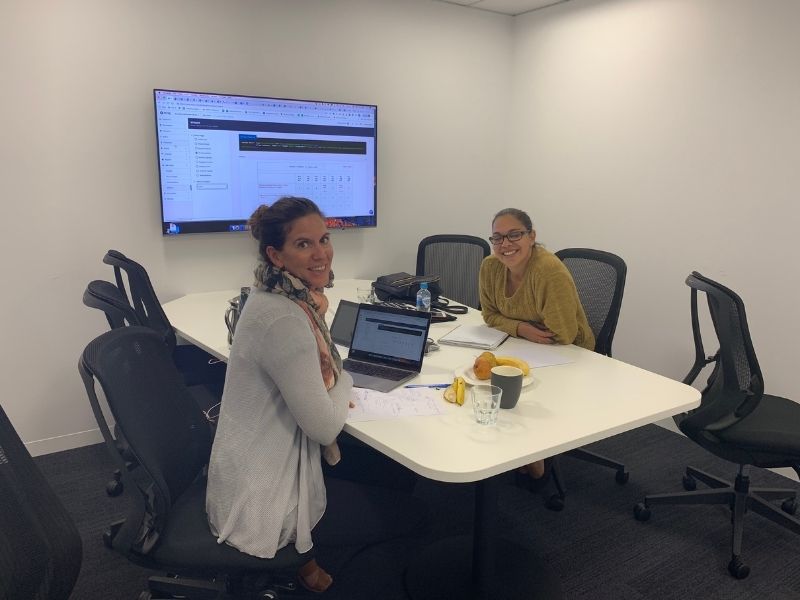
A historic shift: transformative potential of data to enable operators to visualise their online success
We’re currently at a thrilling crossroads in the tourism industry’s digital journey. The newfound accessibility for small businesses to effectively leverage analytics for informed decision-making represents a transformative shift. The ease of measuring conversions, which was once a complex process largely limited to only those tech-savvy businesses, is now within the grasp of smaller entities.
This so-called ‘democratisation of data insight’, where valuable data is more accessible and interpretable for all businesses, has opened up a world of exciting possibilities. Moreover, the wave of marketing buzz around Google Analytics 4 (GA4) that has hit operators’ inboxes has brought the topic into the limelight.
It’s crucial we seize this momentum and ride the wave, capitalising on the surge of interest to drive our industry’s digital progress forward.
This is a turning point, a game-changer. As businesses translate their growth objectives into tangible metrics, they can now adjust their marketing plans based on meaningful data, creating an unprecedented pathway for proactive growth.
Opportunity 1: Operators can improve visitor experience and increase conversion rate by leveraging data measurement
At the dawn of the new millennium, tourism businesses began carving their own online niches using content management and booking systems and later channel managers. While these technologies promised increased sales, they offered limited visibility into website performance or how to leverage their online presence for the entirety of a customer’s digital journey.

During these early years, businesses often operated in an information vacuum, frequently falling prey to self-serving sales tactics that promised ‘thousands of hits’. Thankfully, the emergence of sophisticated analytic tools like Google Analytics, along with a shift away from hits and page views to being able to measure interactions and customer journeys is giving businesses a tangible view of what is happening (or not) in their virtual shops.
Opportunity 2: Connecting website performance to business goals
Gaining insight into your website’s performance and your customers’ behaviours is of utmost importance. Much like a savvy retailer who meticulously arranges their store layout and puts all shop assistants through sales training, your website too should be crafted with a deep-seated understanding of your customers. They are not merely casual visitors – they are potential patrons. Each interaction that they share with your website holds the potential to turn a flicker of interest into a soft – or hard commitment. harnessing the power of analytics and user behaviour data enables you to tailor experiences that resonate with your audience. You can accurately address their needs and even exceed their expectations

Google Analytics 4 (GA4) serves as a key instrument in navigating the intricate web of customer behaviour and conversion. Once configured to support your business goals, GA4 provides a clear, comprehensive view of your digital ecosystem. It will shed light on the pathways to leads and sales and can, therefore, then calculate the ROI of your different marketing campaigns. Without the guiding light of powerful tracking tools such as Google Analytics 4 (GA4), tourism businesses are essentially navigating in pitch darkness every time they dedicate valuable time and resources towards enhancing their online presence. It’s like setting sail on a complex voyage with no compass, risking misguided endeavours and potential wastage of crucial resources.
Opportunity 3: Harnessing lead generation to stop paying 3rd party remarketing fees
The value of effective marketing campaigns in drawing in and retaining customers is undisputed. However, when these campaigns are paired with strategies to engage and gather contact information from new, initially passive website visitors, the impact can be significantly amplified. While many service industries – real estate being a prime example – have made lead generation a central focus, tourism businesses have often prioritized reservation technology. As a result, lead generation might still feel like a relatively new concept in this sphere.

Effective marketing campaigns are crucial in attracting and retaining customers. But marketing becomes even more powerful when paired with a way to capture the attention – and the contact details – of your new website visitors who are simply lurking. While many service industries (such as real estate agents) have been focusing on getting leads, tourism businesses have been lured into focusing on restech and the lead generation concept is new to them.
Example
For instance, when we first start working with operators, one of our immediate questions is about the number of phone calls/walk-ins they get in a week versus the number of new users on their website. After confessing that they either haven’t looked at their analytics ‘in a while’ (or don’t have at all), they do the maths and realise that the number of new online visitors vs new ‘physical’ enquiries are tenfold.
This quick check is the perfect way to get them to realise that it is high time they put some effort into 1) assessing their online customers’ journey on their website, 2) making improvements so they can automatically capture the details of those new users that weren’t going to book right away, and 3) nurturing these new users using an email or other nurture sequence. Otherwise, they’d be forever relying on 3rd party remarketing solutions such as Meta or Google Ads.
Opportunity 4: Revenue growth through order bumps and upselling
Whilst the focus has been on online sales, the tourism industry’s implementation of strategies such as order bumps (suggested add-ons at the point of sale, like ‘do you want fries with that’) and/or upsells (offering a higher-priced alternative at the time of purchase) has been limited. Order bumping (pre-checkout) and upselling (post-checkout) allow you not only to increase revenue but also enhance your customers’ experience by providing additional value. By offering additional products or services, you can create an experience that exceeds expectations.
Restech / booking systems have started to offer the ability to add order bumps to their checkout experiences but the uptake by the industry has been lackluster. However, upsells can easily be done independently from any booking system, with a simple email. It should be common practice for every tourism operator to at least upsell.
Check with your restech/booking system on how to activate order bumps and upsells. Pay particular attention to the user experience, especially from your product page all the way to checkout.
E.g. if you are an accommodation provider, upsell a bottle of wine, fruit platter or a massage. If you are a tour operator, upsell pre-tour nibbles/drinks and/or a subsequent tour at a discount or with first right of refusal. Think about your upsells in real life and simply transcribe that process into an online automation to get more value directly at the time of booking (order bump) or with an upsell (via email if your booking system doesn’t support it).
Hint, if you run the upsell from your own system as opposed to your restech, you will not pay commission on the upsell.
In conclusion, we stand at a fascinating junction in the digital journey of the tourism industry. The time has come for small businesses to seize the wealth of opportunities that advanced data analytics and efficient digital marketing strategies offer. By embracing tools like Google Analytics 4, fine-tuning our online presence, harnessing lead generation, and capitalising on underutilised strategies such as order bumps and upsells, resource-conscious small businesses can confidently make data-driven decisions on their next strategic investments.
Each of these strategies offers its own potential to transform our businesses. However, when wielded together, they have the power to revolutionise the way we, as an industry operate in the digital space, enhance customer experiences, and achieve unprecedented growth.
Where to from here?
Top AI Tools for the Tourism Industry - Free cheatsheet

